Grandmother’s Favorite Kitchen Towel Knitting Pattern
This kitchen towel knitting pattern is based off of my favorite dishcloth pattern. It’s pretty simple to knit, and this pattern is free!
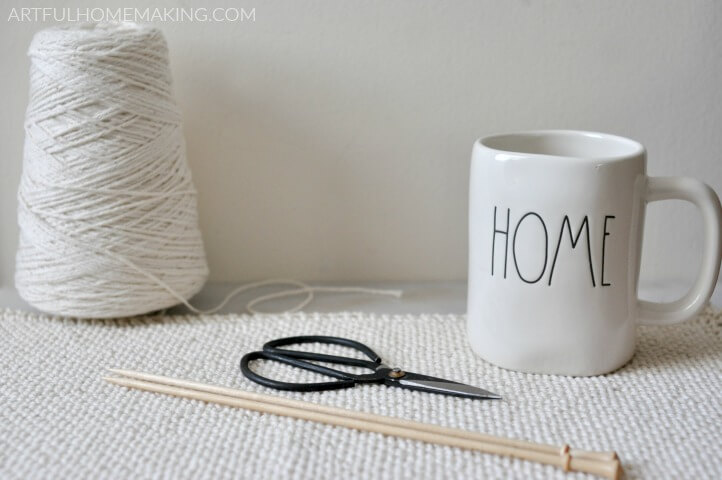
This pattern makes a rectangular knitted “cloth,” which can also work as a table runner or doily of sorts.
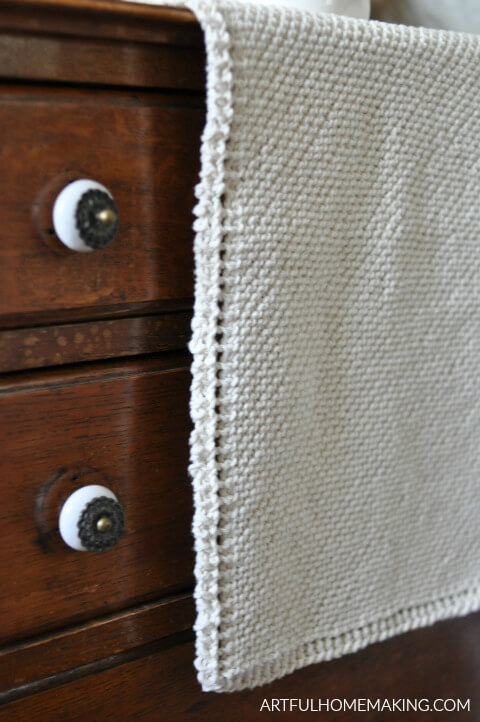
If you want to use this as an actual kitchen towel, you can add buttons to hang it on your oven door or towel rack.
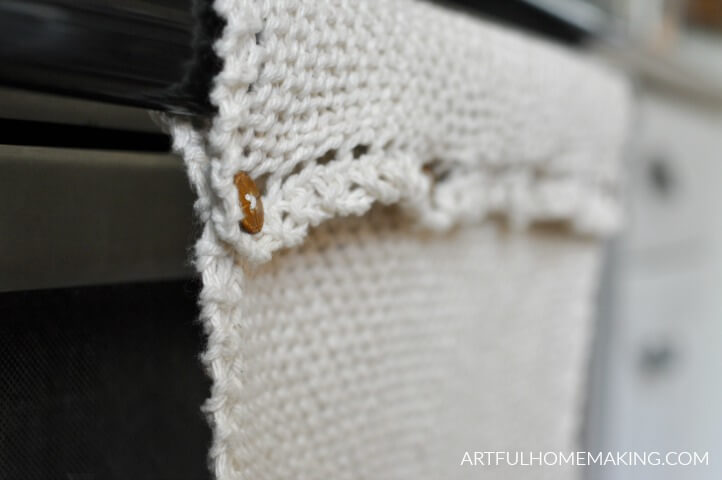
The possibilities are endless for this knitted kitchen towel!
How Do You Knit a Kitchen Towel?
This kitchen towel is based off of the classic dishcloth pattern called Grandmother’s Favorite Dishcloth.
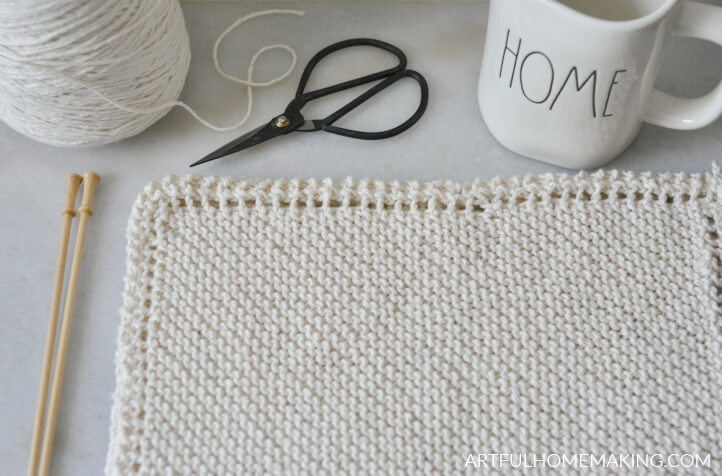
RELATED: Grandmother’s Favorite Knitted Dischloths Pattern
That favorite basic dishcloth pattern is a square, but now it has been slightly altered to make it a rectangular shape.
I used cotton yarn (just like I usually use for the dishcloths), and size 7 knitting needles.
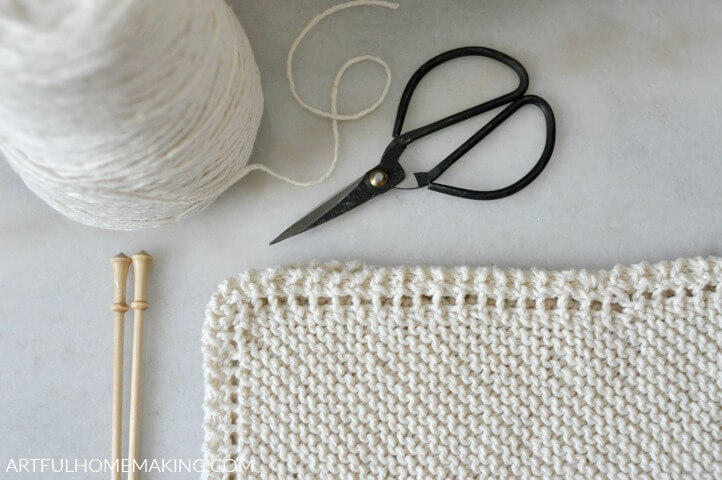
Supplies Needed for Knitted Kitchen Towels
Affiliate links included below. Read my disclosure here.
- 3 skeins of Sugar ‘n Cream cotton yarn (to make sure you have enough—I used one of these cones, so didn’t actually measure)
- Size 7 Knitting Needles (I love these, but these will also work)
- Yarn needle
- Scissors
- Buttons (optional—I used four)
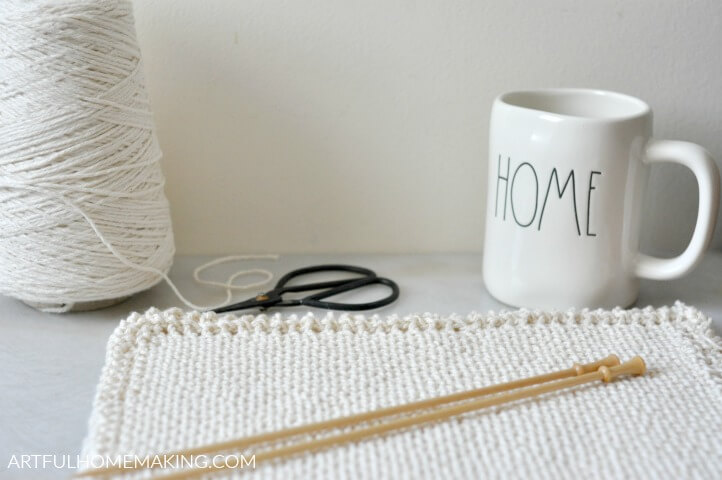
Kitchen Towel Knitting Pattern
Cast on 4 Stitches
Row 1: knit 4
Row 2: k2, yo, k to end of row
Repeat Row 2 until you have 70 stitches on the needle
Row 3: k2, yo, k to end of row
Row 4: k1, k2Tog, yo, k2Tog, k to end of row
Repeat Rows 3 and 4 (alternating rows) 20 times.
“Alternate rows 20 times” means doing both rows 3 and 4 for a total of 20 times. So, knit row 3, and then do row 4. That’s one time. Then do row 3 again, and then do row 4. That’s two. Knit row 3 again, and then do row 4. That’s three. And continue this cycle 20 times.
Note: (In order to keep this straight, I make myself a chart. On a piece of paper, I write “Row 3” at the top, and “Row 4” below that. Each time I do Row 3, I make a tick mark next to “Row 3.” Then, I switch to Row 4, and make a tick mark next to “Row 4.” This is the easiest way for me to keep track of which row I’m on. However, you may find it helpful to use a stitch marker. It’s up to you. The key is to keep alternating rows, 20 times.)
Row 5: k2, yo, k to end of row.
Row 6: k1, k2Tog, yo, k2Tog, k to end of row.
Repeat Row 6 until you have 5 stitches on the needle.
Row 7: k2, k2Tog, k1
Bind off the 4 stitches.
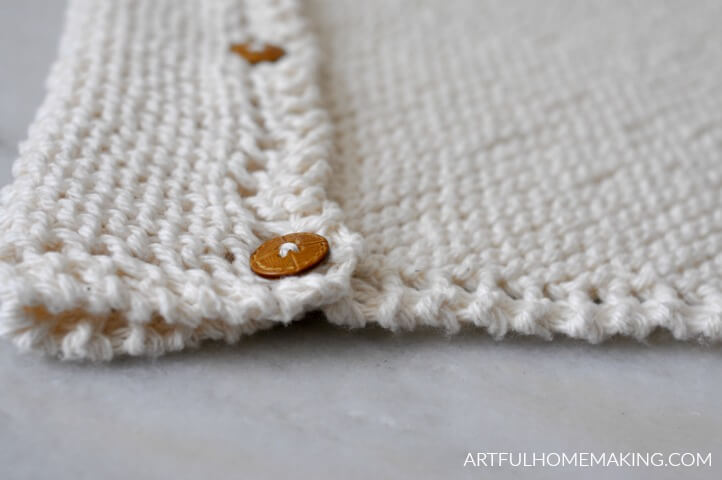
Finishing
After binding off, then cut your thread, leaving a 5-6 inch tail. Weave the ends of the tail into the dishcloth with the yarn needle.
If you want to hang your kitchen towel, you can sew buttons to the top.
In order to figure out where to sew on the buttons, I draped the finished kitchen towel over my oven handle. Then I marked the overlap, and used a measuring tape to evenly space the buttons. After marking where I wanted them, then I sewed them on with regular sewing thread and a sewing needle.
I raided my button stash and found these four matching buttons I didn’t even remember I had. They were the perfect size to fit through the holes in the edging of the towel.
If you want to use this knitted piece as a table runner or doily, you can leave it as-is.
You can also block it if you’d like it to lay straighter.
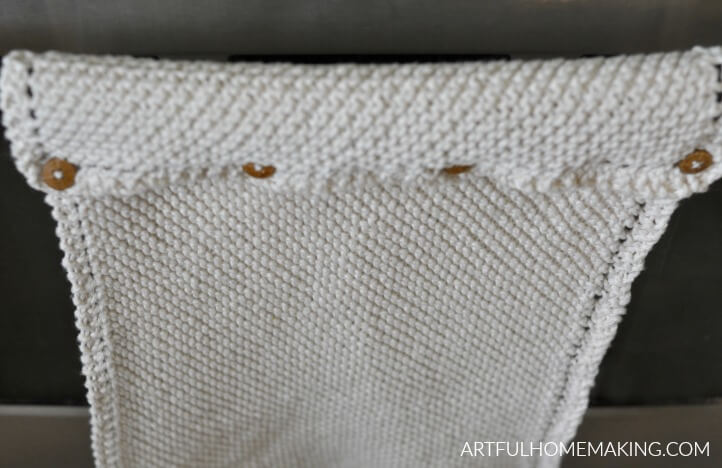
I hope you enjoy making this kitchen towel knitting pattern!
Related Posts
- Grandmother’s Favorite Knitted Dishcloths Pattern
- Easy Knitted Coaster’s Pattern (Free)
- Easy Knit Cowl Pattern
Pin This Post for Later

Disclosure: This post contains affiliate links. Read my full disclosure policy. Sharing here.

I’m following the pattern but the ending corner turns out looking longer than the others. Do you know what could be going wrong?
It sounds like some of the decrease stitches may have been skipped.